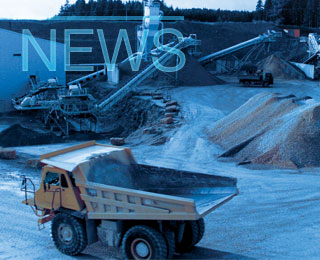With this week seeing equity markets in turmoil and concerns over global economic growth conditions intensifying, question marks have been raised over whether US construction activity will be able to hold firm.
Recent indicators are largely supporting expectations of continued growth in US construction activity. The latest housing data for December showed continued strong growth in both permits and starts, which were up by 15 and six per cent, respectively. Broader economic statistics also suggest a positive environment for housing. Job growth and modestly easing credit are expected to drive higher demand for housing and homeownership over at least the next 1-2 years, according to JP Morgan.
Meanwhile, in the commercial construction sector, the US Architecture Billings Index, a leading indicator of non-residential construction activity came in at 50.9 in December following 49.3 in November. A score above 50 indicates an increase in billings, while a reading below 50 indicates a negative outlook. Commercial building construction typically follows the billings index by about six months.
In terms of infrastructure activity, the passage of a five-year federal Fixing America’s Surface Transportation (FAST) Act, signed at the end of last year, is expected to provide more than US$305bn to maintain and improve the nation’s surface transportation and is likely to stimulate a rise in cement consumption. “FAST represents an average addition of 835,000t to the cement industry,” said Edward J Sullivan, chief economist and group vice-president at PCA. FAST is seen largely as an improvement over the previous MAP-21. While funding levels are modestly higher, it also represents a multi-year commitment that allows states to engage in multi-year projects, the PCA notes.
Oil price impact
Lower oil prices have significantly reduced construction activity in energy-dependent areas such as Texas and North Dakota. Interestingly, however, low oil prices are expected to have a net positive effect on the US cement consumption, although clearly not for the energy-producing states. Bernstein also noted that it does not expect the impact of further weakening in the oil and gas sector to be meaningful as the largest declines in activity already occurred in 2015.
Outlook
With the US four years into its recovery and still in the early stages of its construction cycle, overall, Bernstein believes that the "lead indicators remain consistent with recent trends in US construction, and there are no meaningful signs of a slowdown, particularly in the residential sector which has been the main engine of growth since the crisis."
The PCA’s latest Market Intelligence report also observes that the economic fundamentals in the United States are sound and should support sustained growth in construction activity which it expects to increase by five per cent in 2015 and 6.5 per cent in 2016, respectively. HSBC's US forecasts, meanwhile, assume continued high-single digit growth in residential, a deceleration in non-residential to mid-single digit growth, and a low-single digit rise in civil engineering output driven by rising state highway spending.
In terms of cement demand, latest data from the USGS shows that cement volumes in the US bounced back in November. Consumption increased 12 per cent in the month versus low-single digit growth in the first 10 months. The improving trend was mainly driven by Northeast and South Atlantic regions. Going forward, annual domestic cement demand is expected to grow at around 3-5 per cent, meaning the region looks set to continue leading consumption gains in the developed world.

Sign up for our Daily News Service
Our editors' pick the top news delivered to your inbox each day.
Sign up for the daily email
